A couple of years ago I stumbled upon the Emazing Bike electric bicycle brand and while I hadn’t heard of the company prior to seeing it at a shop in San Francisco, I found their products to be unique and quite enjoyable. I haven’t seen them at many other shops across the US but they do appear to sell online. In short, they offer ebikes that are light weight, well balanced, quiet to operate and very smooth. The Artemis is one of the higher-end offerings for urban riding and compared to its cousin the Daedalus 72pd, it offers a larger more powerful motor, throttle mode in addition to assist and front and rear disc brakes. There are integrated attachment points for fenders and a rear rack if you’d like to use it for commuting purposes and at ~38 pounds (depending on the frame size you choose) it’s lighter than most other electric bikes I’ve tested. If you take the battery off, it gets even lighter and could easily be lifted and mounted to car, bus or train racks. Since the hub motor is a geared freewheeling design, the bike operates very well even when it’s not powered on. While the Artemis 73hd does not include a suspension fork or seat post shock, you could add a Thudbuster for ~$160 after market to smooth things out.
At 350 watts, the geared hub motor used on the Artemis is about average in terms of strength but actually quite satisfying to ride. As mentioned previously, it freewheels so you aren’t fighting any resistance and the unit is fairly light weight. It’s almost hidden behind the rear disc brake and seven speed Shimano cassette. If you watch the video review above, you’ll notice that the motor is almost inaudible for the handheld shots. Only when I mounted the camera to the frame could you hear the whirring sound of it activating when climbing or going through the rocks. There’s not quick release for the rear wheel on this bike so changing flats or doing service might involve more effort. While many entry-level electric bikes only include a cadence sensor, the Artemis 73hd includes this as well as a TMM4 torque or “strain” sensor that measures how hard you push. The combination of these two sensors (and the 12 magnet design of the cadence disc) is easy to appreciate when you’ve ridden other bikes. This bike doesn’t feel jerky at all and I’d guess that the impressive range is due in part to these sensors working to activate the motor without wasting energy. Note that range will surely suffer the more that you use throttle mode.
The battery pack driving the motor and display system on the Artemis offers 36 volts of power with almost 9 amp hours of capacity. That’s pretty solid, about medium in terms of capacity compared with other bikes I’ve tested. The battery chemistry is Lithium Nickel Oxide, similar to what’s used in laptops and cell phones. Characteristics include high energy density (making it light weight) and good life (meaning it can endure many charge cycles before degrading). In an ideal world the battery would be integrated directly into the tubing on the bicycle creating space for a bottle cage and just cleaning it up a bit (the battery pack did rattle a bit during my test rides). Ultimately, the canister design they chose offers the same low and balanced weight but is easier to remove and more affordable than an integrated design. It stays out of the way when pedaling and can be charged on or off the frame which is great for commuting if you want to keep people from tampering with the system.
Operating the bike requires two steps. Once the battery is charged and secure on the frame, you press an on/off toggle switch there and then hold the mode button on the button pad mounted to the left bar. The display and button pad are fairly generic but they work well and are easy to access when riding. The display shows battery level, speed, range and pedal assist mode 1 through 5. The higher assist you choose, the more power the motor will receive and the easier it will be to accelerate, climb or maintain high speeds. The rest of the handle bar cockpit area is clean and familiar to anyone who has ridden a traditional bicycle. The grips are flat rubber and on the right side there’s a half-twist shifter which controls the Shimano Tourney TX derailleur. The stem is a riser style and the handlebar itself is also a riser so this brings the grips up and back creating a more comfortable ride. The brake levers are from Tektro and operate the front and rear mechanical disc brakes (some models may include hydraulic disc brakes) which should offer some stopping advantage in wet conditions as compared with rim brakes.
My favorite aspect of this bike is how light and balanced it is… It would be an excellent commuter because it’s fun to ride but doesn’t look too fancy or cost too much. Yeah, it’s still not “cheap” by any means but the upgraded assist and balanced battery design comes at a bargain here. The drivetrain is generic along with the pedals, grips and other hardware but the four frame sizes and the frame itself is very nice. The Emazing Bike Artemis 73hd is not available in a step-thru configuration at this time but the top tube does cut away which makes standing over the bike a bit easier. I like the fender and mounting bosses and grew to appreciate the hardware that was installed on the demo bike reviewed here but that will cost extra. I think this ebike is priced about right but it doesn’t feel like a bargain compared to some of the other Emazing Bike models I’ve tried. If you’re a heavier rider who thinks the extra power is worth it or if you want that twist throttle, this might be a good choice.
Pros:
- Available in four frame sizes for improved fit, quick release adjustable seat post also helps to dial it in
- Weighing in at ~38 pounds, the Artemis 73hd is one of the lightest and most well balanced ebikes I’ve tested
- Removable battery pack makes the bike even lighter for transport and is convenient to charge on or off the frame, store at neutral temperatures and keep from discharging below 20% for longest life
- Smooth, responsive pedal assist thanks to the 12 magnet cadence sensor on the bottom bracket combined with the TMM4 torque sensor on the rear dropout
- Larger diameter wheels, efficient commuter tires and stiff frame and fork are efficient and help to enable the excellent range (up to ~60 miles per charge in optimal conditions)
- Feels good to pedal and use as a bicycle vs. a scooter feel, designed for active riding with a more forward body position
- Frame manufactured in Taiwan vs. China, the company has 50 years of experience and produces frames for other leading non-electric bicycle brands
- Nickle Magnesium Cobalt battery chemistry offers high energy density, also durable for 1,000+ charge cycles if cared for, solid one year warranty
- Available in black or white color choices, everything blends together nicely and the motor doesn’t stand out visually or audibly
- Aluminum bash guard on front chain ring protects the sprocket and keeps pants from getting snagged
Cons:
- The Tektro brake levers on this bike do not seem to have a motor inhibitor switch which means you may be fighting the motor if you continue to move your pedals forward
- No integrated suspension on the fork or seatpost, the bike is very efficient but might feel bumpier given the narrow tires and stiff frame
- Only available in a high-step frame design, though it does have a lower top tube than some it still requires a bit more effort to mount
- No mounting points for a water bottle cage on the downtube or seat tube because the space is occupied by the canister style battery pack
- Canister style battery pack can rattle a bit when riding over cracks and bumps compared to some more integrated packs I’ve tested, may also be easier to tamper with or remove from frame
Resources:
- Official Site: http://www.emazingbike.com/collections/ourebike/products/artemis-73hd
- More Pictures: https://goo.gl/photos/cpFsPjxZNcFkZLBYA

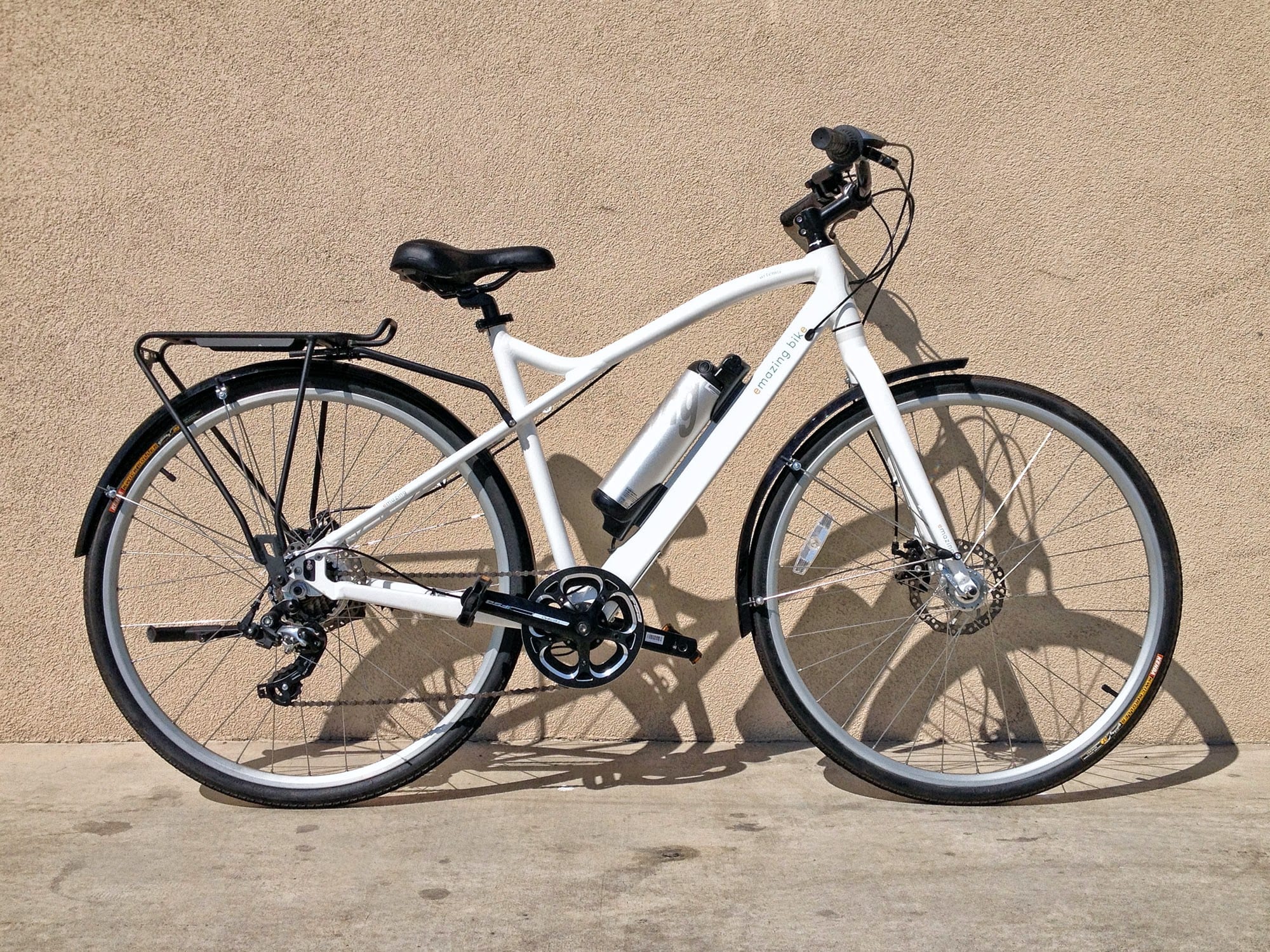
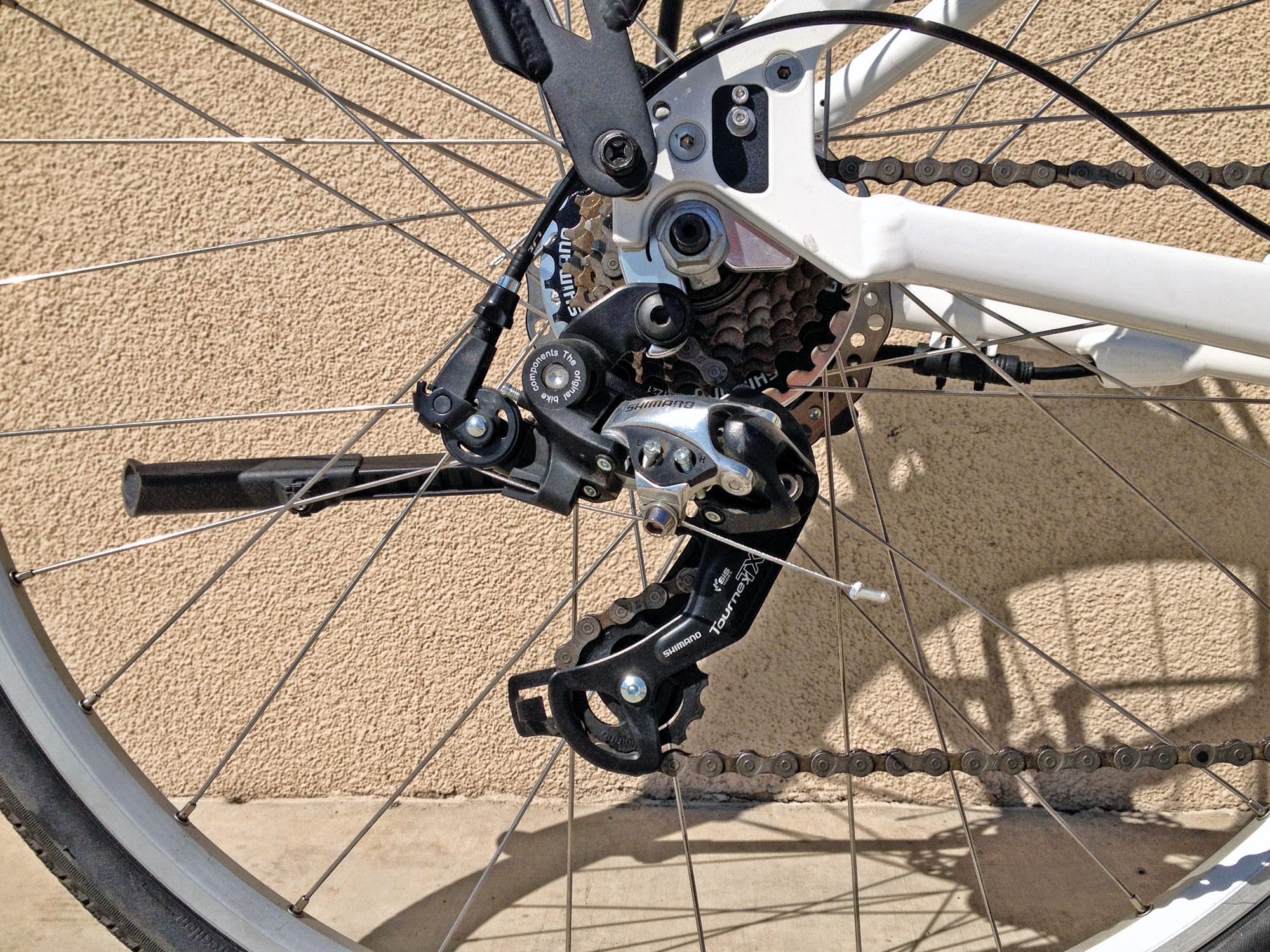
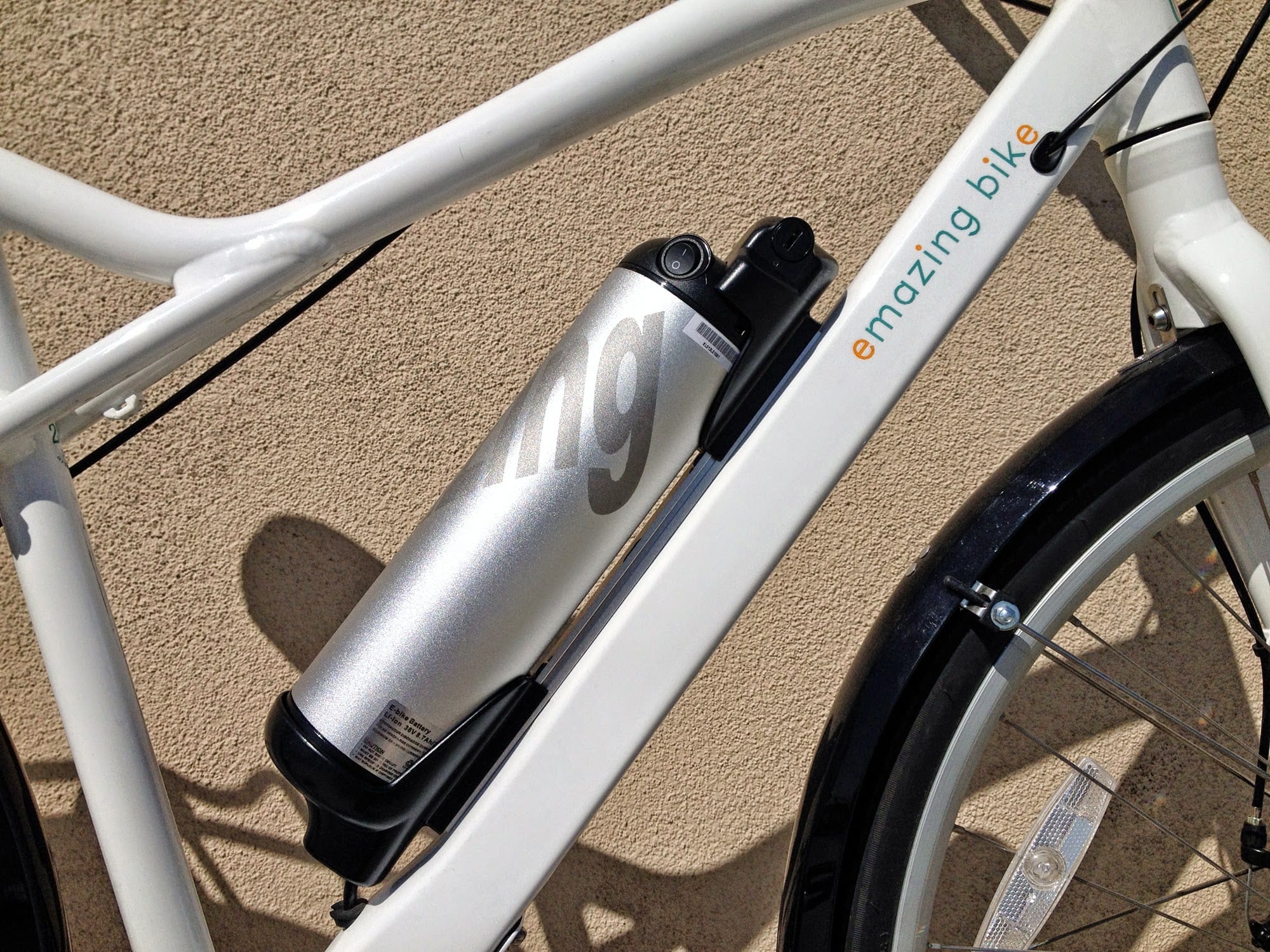
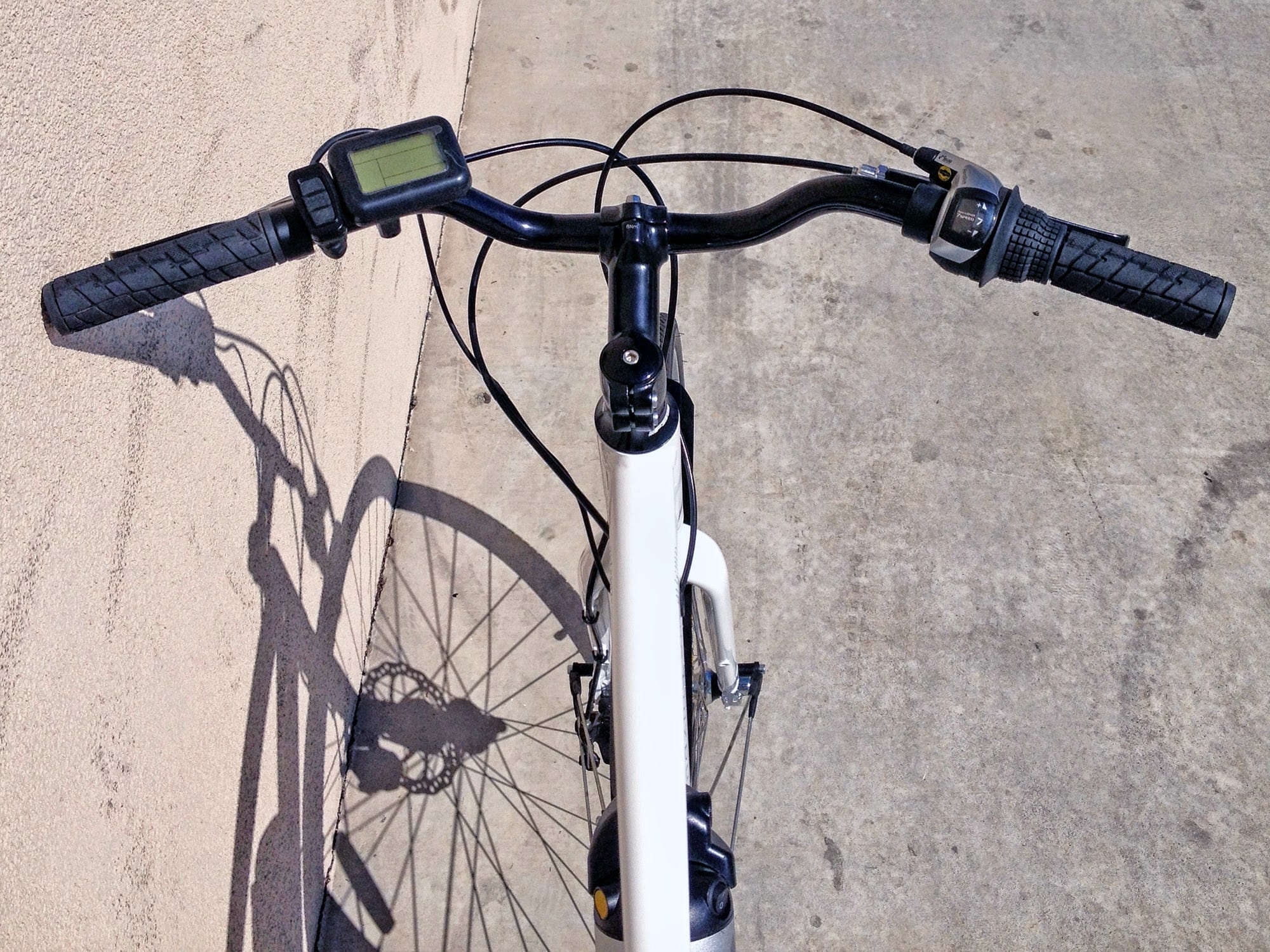
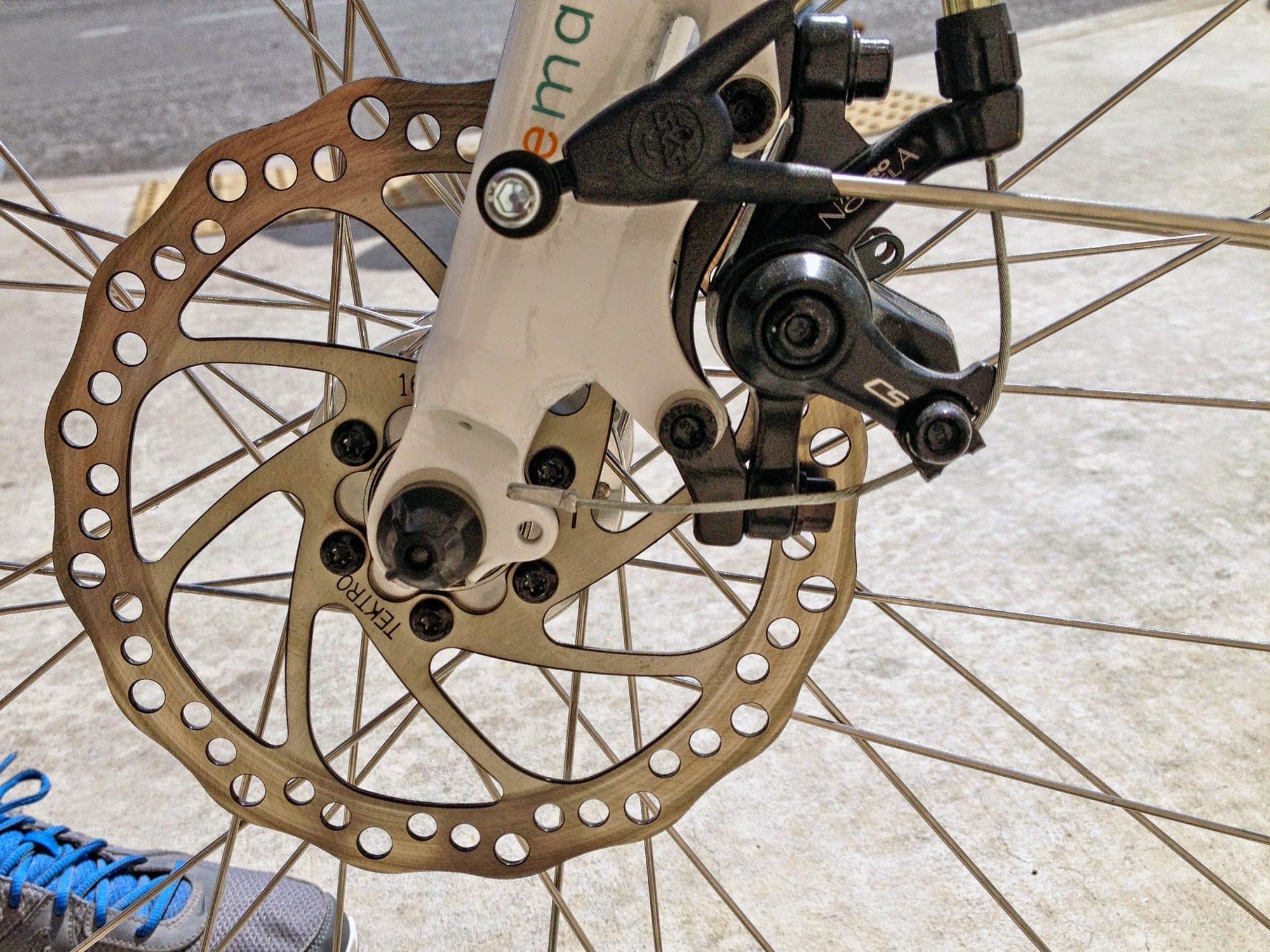
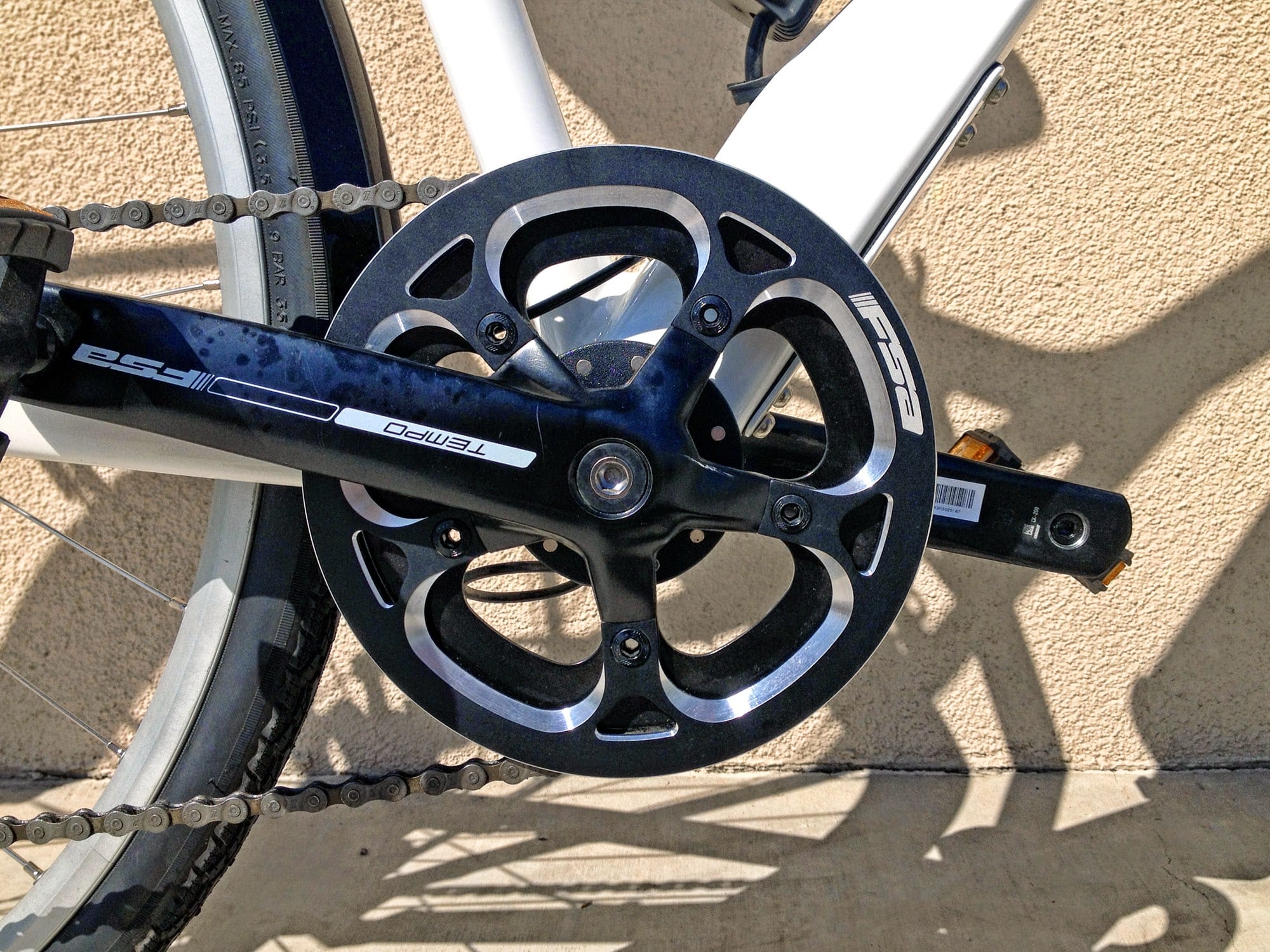
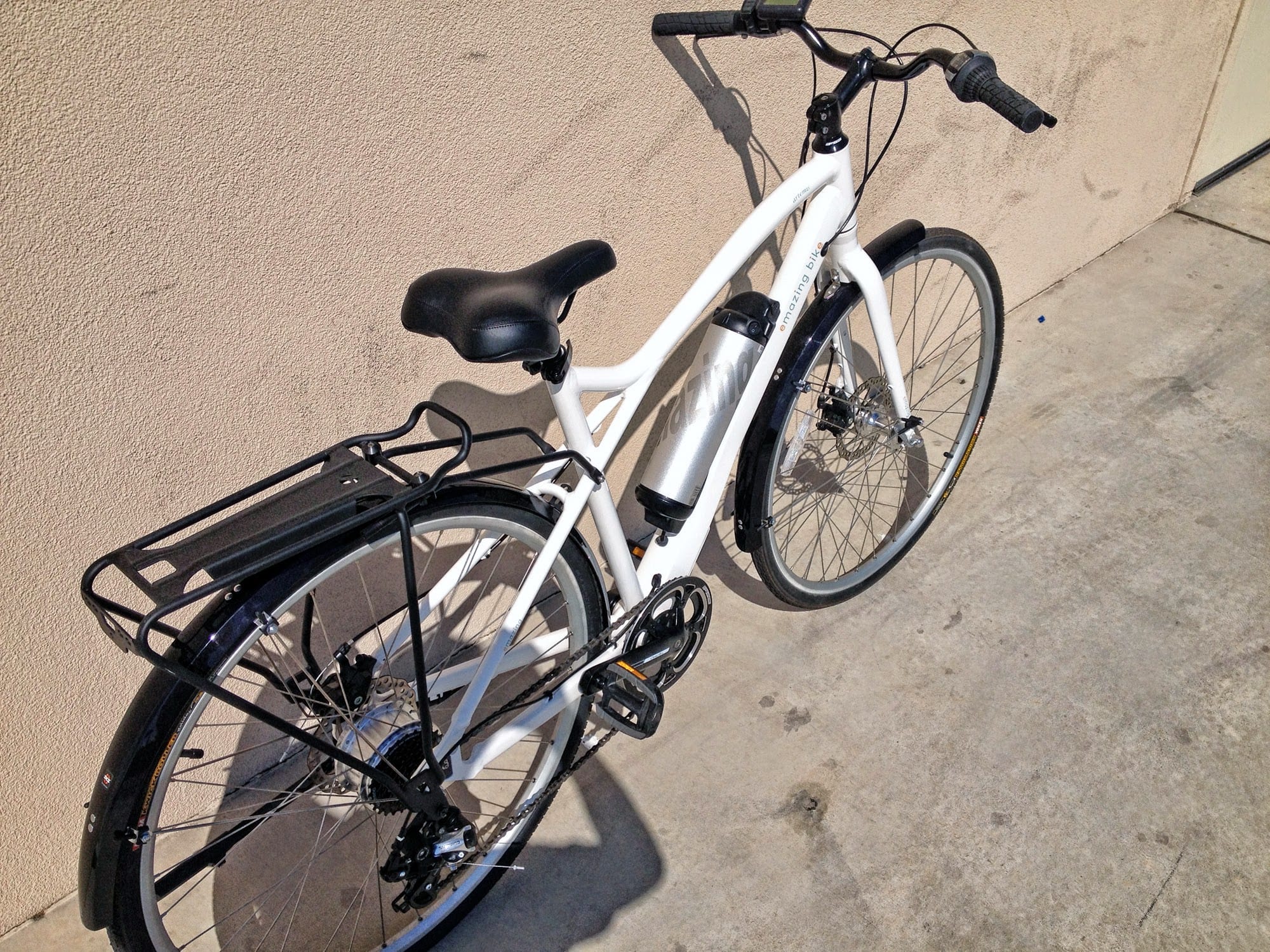

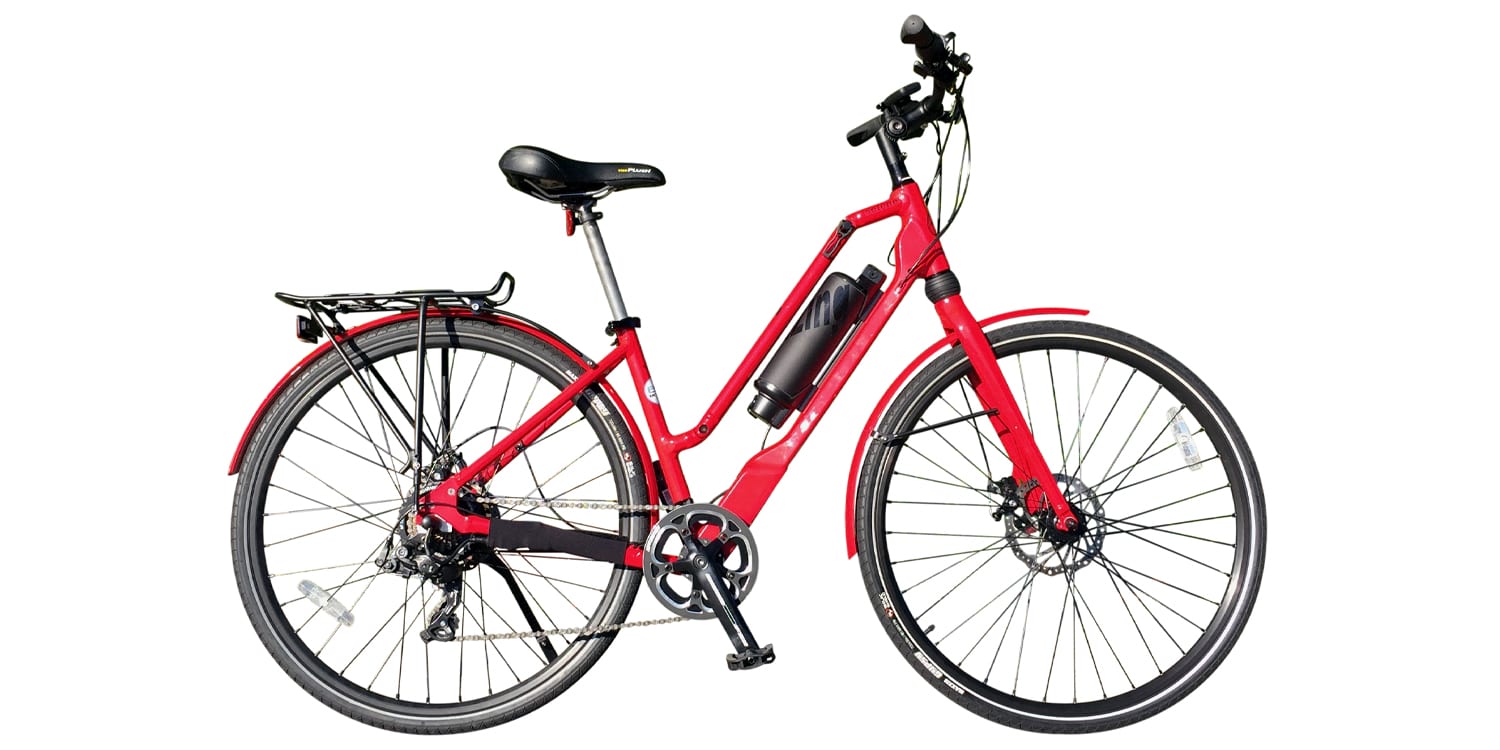

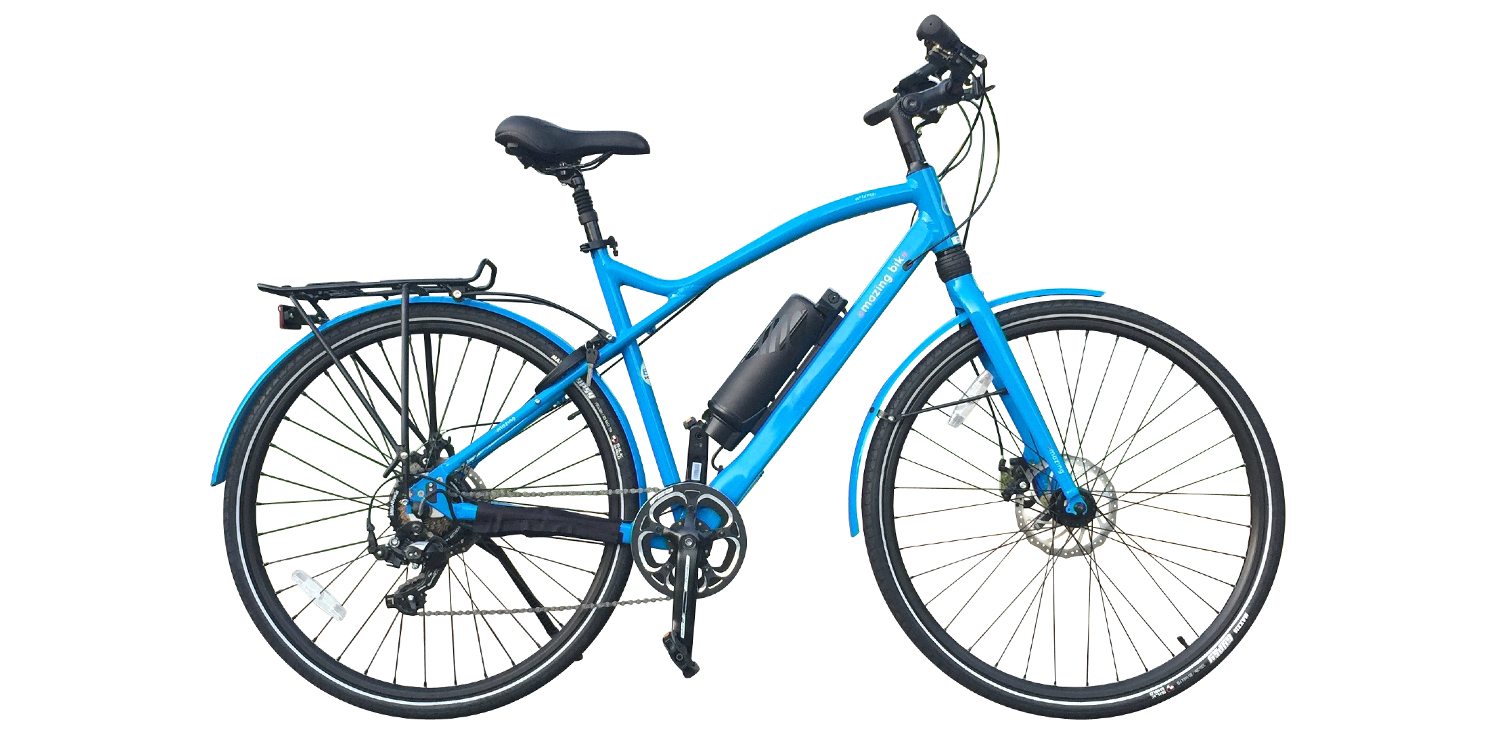
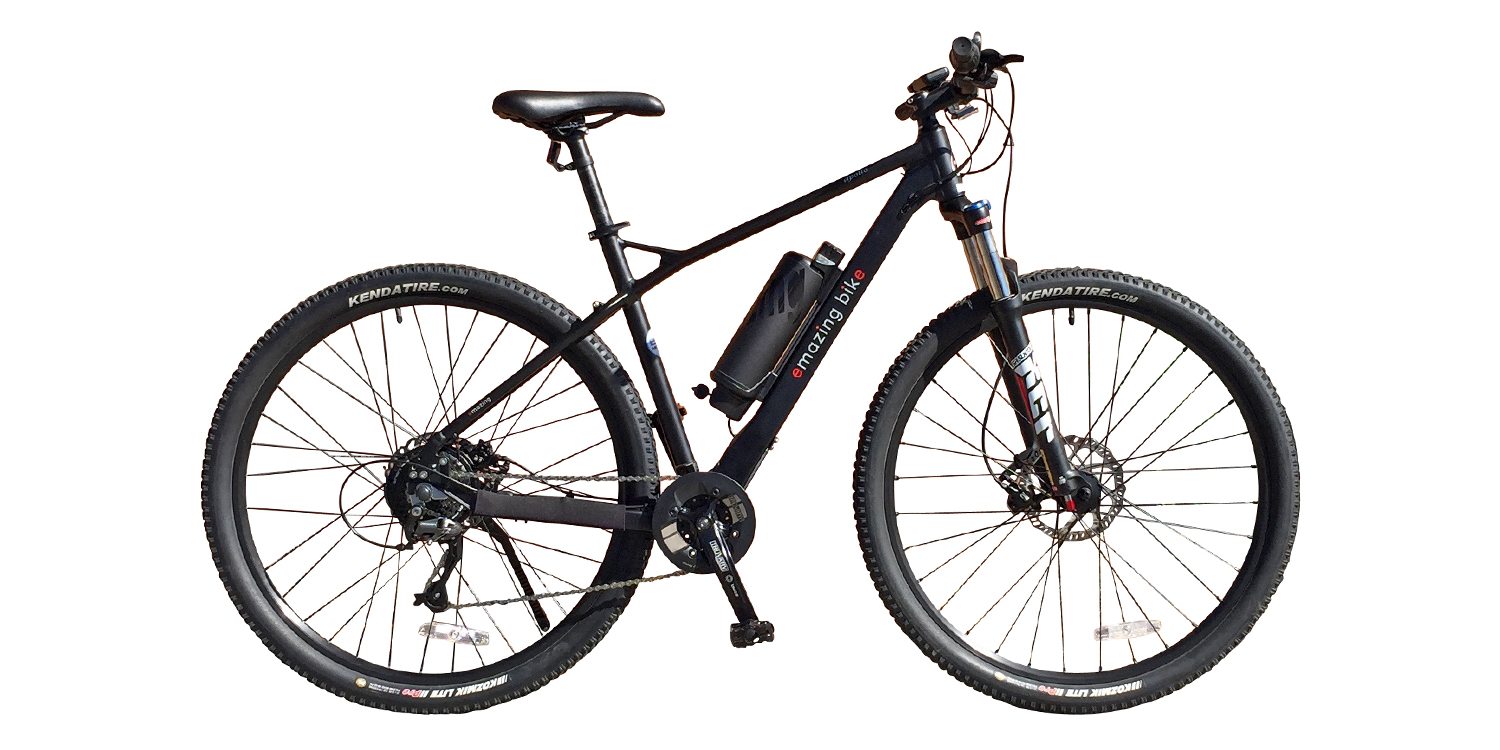
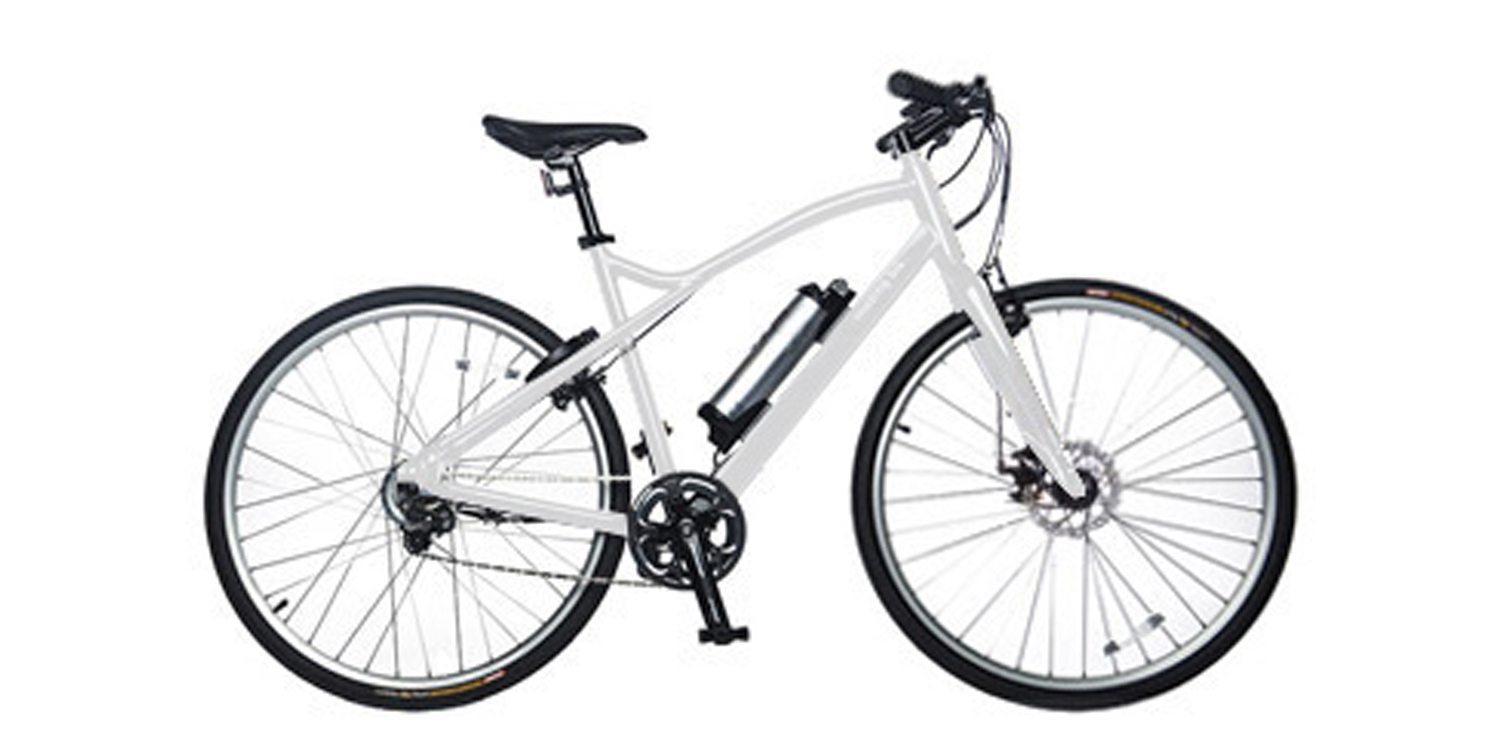
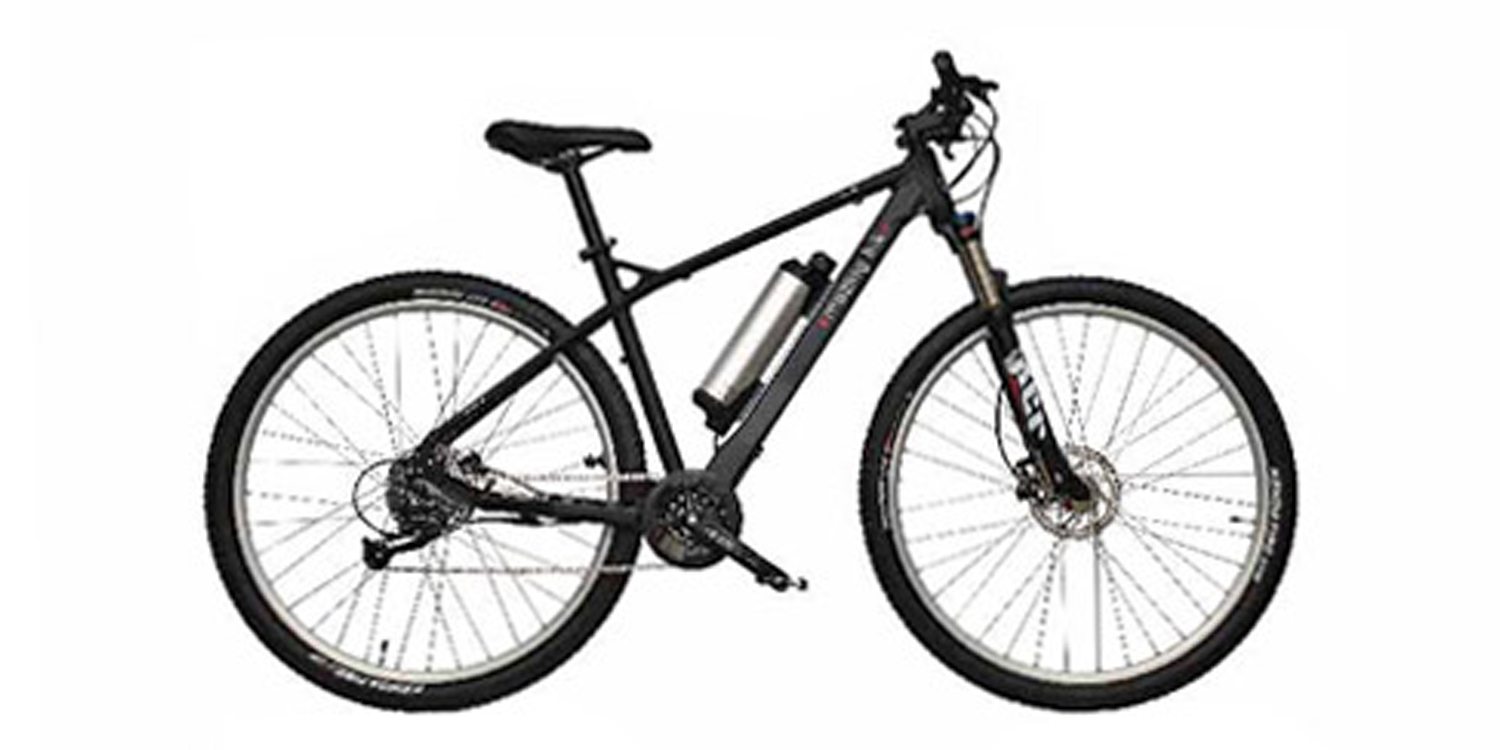
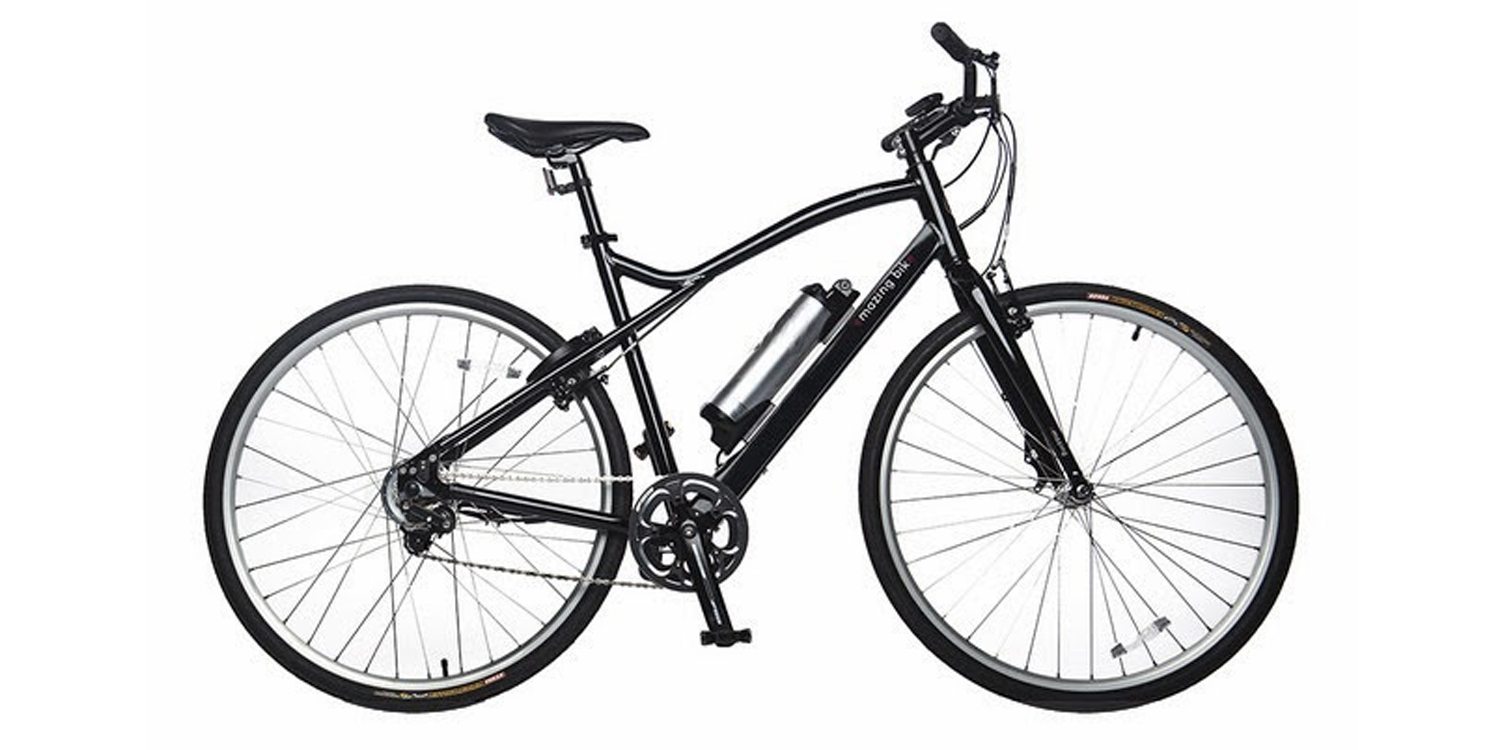
Reader Interactions